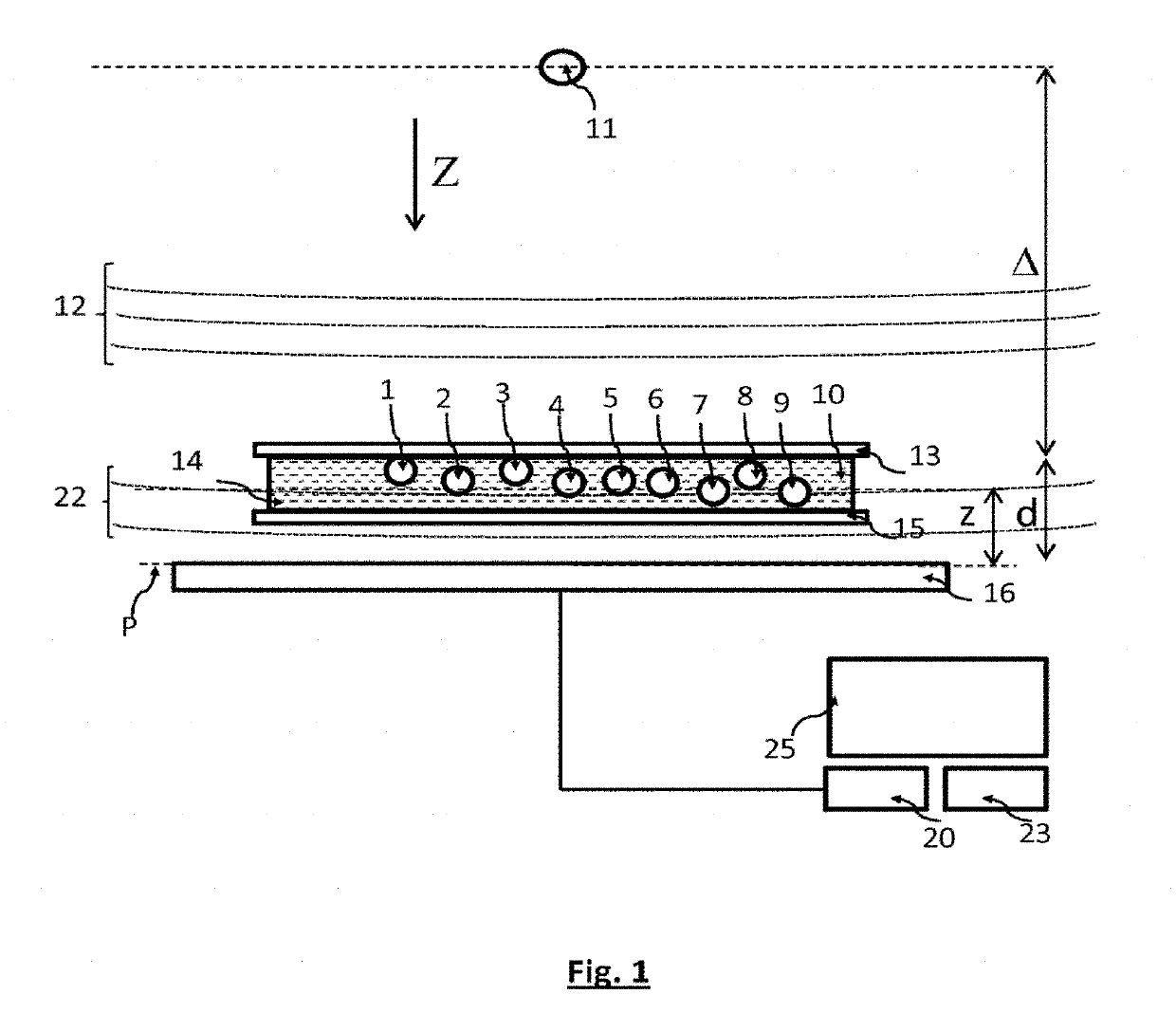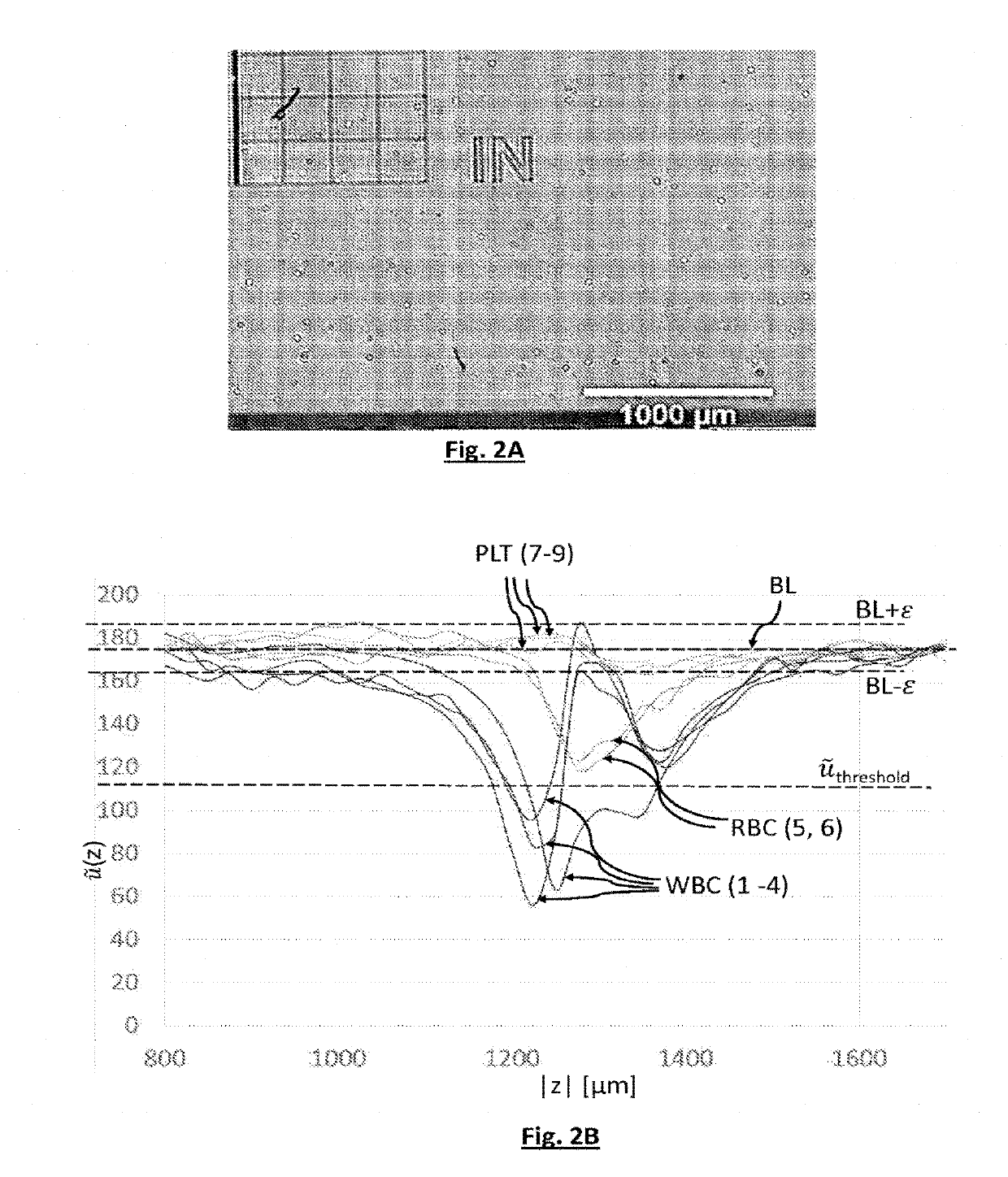Method for identifying blood particles using a photodetector
a technology of blood particles and photodetectors, applied in the field of counting and identifying particles, can solve the problems of difficult implementation, insufficient detection of blood particles, and insufficient complex image of samples,
- Summary
- Abstract
- Description
- Claims
- Application Information
AI Technical Summary
Benefits of technology
Problems solved by technology
Method used
Image
Examples
Embodiment Construction
[0067]FIG. 1 shows an example of the device that is one subject of the invention.
[0068]A light source 11 is able to produce a light wave 12, which is called the incident light wave, in the direction of a sample 14, along a propagation axis Z. The sample 14 includes a medium 10, for example a biological liquid, including particles 1, 2, 3, 4, 5, . . . , 9 that it is desired to identify among preset types of particles.
[0069]A particle may be a cell. In particular, when the medium 10 is blood, or a solution including blood, a particle may be a red blood cell, a white blood cell or a platelet.
[0070]A particle may also be an organic or inorganic microbead, for example a metal microbead or a microbead of polymer or glass, this type of microbead commonly being used when performing biological protocols. A particle may also be a droplet, for example a lipid droplet, immersed in the medium 10. It may also be a question of a microorganism, for example a bacterium or a yeast, or of an exosome. ...
PUM
| Property | Measurement | Unit |
|---|---|---|
| distance | aaaaa | aaaaa |
| distance | aaaaa | aaaaa |
| distance | aaaaa | aaaaa |
Abstract
Description
Claims
Application Information
 Login to View More
Login to View More - R&D
- Intellectual Property
- Life Sciences
- Materials
- Tech Scout
- Unparalleled Data Quality
- Higher Quality Content
- 60% Fewer Hallucinations
Browse by: Latest US Patents, China's latest patents, Technical Efficacy Thesaurus, Application Domain, Technology Topic, Popular Technical Reports.
© 2025 PatSnap. All rights reserved.Legal|Privacy policy|Modern Slavery Act Transparency Statement|Sitemap|About US| Contact US: help@patsnap.com



